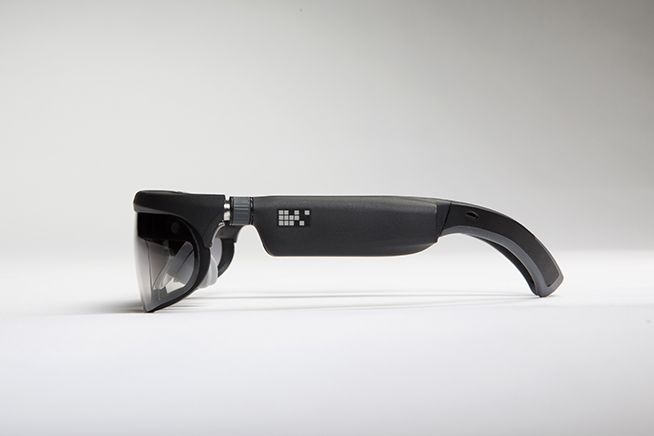Made by ODG, they are the first AR devices to mount Qualcomm's latest and most powerful processor. Expensive, they will land on the market by June 2017
At CES 2017 in Las Vegas, the talk was mostly about virtual and augmented reality. Asus, for example, presented the Zenfone AR, a smartphone compatible with both the AR Tango platform and the Daydream VR visor, two technologies on which Google seems to be betting a lot for the future.
On the stage of the Consumer Electronics Show also went up Osterhout Design Group, a California-based company that took advantage of the visibility of the international event to launch two visors for mixed-reality. The devices made by ODG have a unique feature: they are the first smartglasses to mount Qualcomm's latest and most powerful processor, the Snapdragon 835. To give some figures, it is a tiny chip that is able to significantly increase the overall performance of the devices and reduce battery consumption by 40%. Moreover, by integrating with Quick Charge 4 technology, it also halves charging times.
Technical specifications of ODG smartglasses
It's no coincidence then that most hi-tech companies decide to run their new devices with Qualcomm's SoC. Returning to ODG's visors, let's now take a closer look at the technical specifications. Successors to the VR R7, the ODG R8 and R9 are visors that integrate both virtual and augmented reality. The devices have different internal specs: the R9 overall is a better visor, compared to the R8. It has a 1080p resolution, while the R8 stops at 720p, and a 50-degree field of view versus 40 degrees for the less expensive wearables. The OLED lenses that make up the two MR viewers are also interchangeable.
(taken from YouTube)
The R9 viewer, modular and with a better camera
Another technical difference between of two viewers concerns the camera. The R9 has a 13-megapixel sensor that allows it to record 4K videos as well. The other viewer, on the other hand, has two 1080p stereo front cameras. The R8 also stands out for its size, which is significantly smaller, and lower weight. But the most important element that distinguishes the R9 viewer is the extension port that allows you to customize and improve the features of this pair of MR glasses. You can, for example, add UV sensors, night vision sensors and more.
Advanced motion-tracking
Continuing with the internal specs, both viewers include Bluetooth 5.0, and Wi-Fi connectivity, support GPS and Glonass (the Russian satellite tracking system). Montano tutti e due un sistema duale di microfoni e includono una porta USB di tipo C. Per quanto riguarda il sistema operativo, le lenti smart girano con l’ultimo OS di Google, Android Nougat 7.0. I due nuovi occhiali di ODG integrano un sistema di motion-tracking avanzato, grazie soprattutto al processore Snapdragon 835.
 Fonte foto: ODG
Fonte foto: ODG
Vista laterale dei visori a realtà mista ODG
Prezzo e data di uscita ODG R8 e ODG R9
Come anticipato, rispetto al visore R7 i due nuovi dispositivi hanno un prezzo migliore, ma non basso. L’R8 infatti dovrebbe costare attorno ai 1000 dollari, mentre l’R9 quasi sicuramente sarà messo in vendita a 1799 $. Gli occhiali intelligenti di ODG dovrebbero arrivare sul mercato entro la fine del secondo trimestre 2017.
